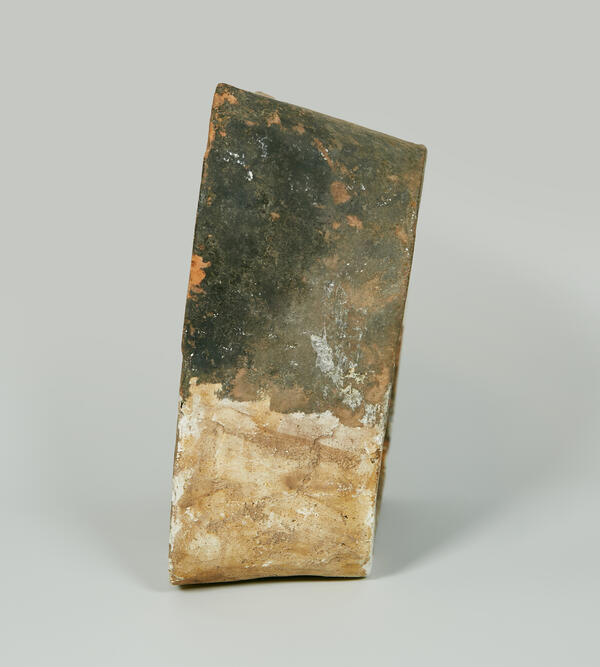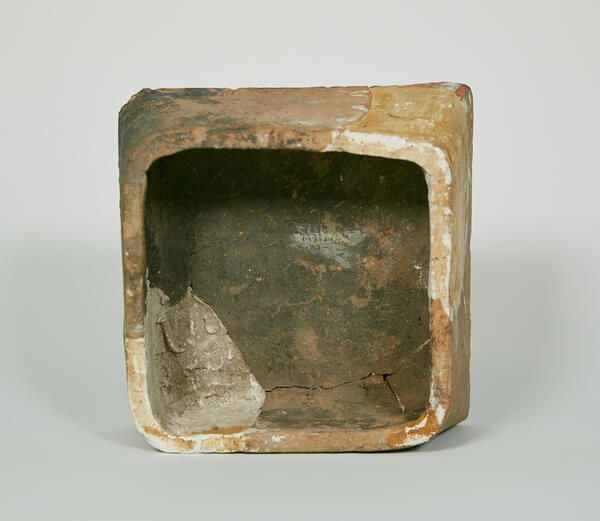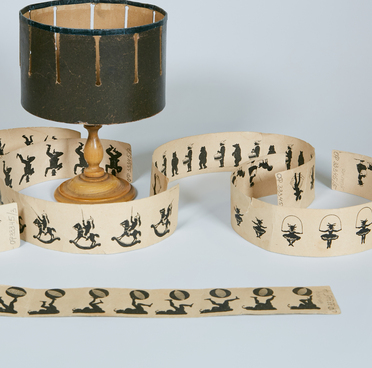Glazed tiles are ceramic tiles used for facing fireplaces, stoves, and walls. They were different from ordinary tiles by a box-like lug, the so-called “rumpa” on the reverse side. It facilitated fixing stove tiles to masonry. Their front surface can be either smooth or embossed, glazed (covered with white or colored glaze or enamel), or unglazed (terracotta). The first tiles — the so-called pot-shaped and bowl-shaped tiles — closely resembled ordinary pots and bowls, sometimes covered with glaze. At the turn of the 14th century, Hungary, the Czech Republic and Slovakia designed plate-type tiles (a ceramic plate with a “rumpa”). A 15th–16th century glazed tile was box-shaped with the walls slightly slanted inward. At the turn of the 17th century, the conical box was replaced by a shaped “rumpa” with holes for passing a wire through them to fix a whole group of tiles in one row.
A terracotta glazed tile depicting a griffin is one of the products of Moscow potters of the 16th century. In the late 1940s and 1950s, the expedition of the Museum of Moscow History and Reconstruction (now the Museum of Moscow) carried out archeological excavations on the territory of the Goncharnaya Sloboda, in Zayauzye and Zaryadye near the Kremlin. Apart from various finds made of metal, wood, glass and leather, there were also a lot of clay objects — products of Moscow potters. They laid the foundation of the extensive tile collection of the Museum of Moscow.
The earliest finds were the so-called terracotta or red-clay tiles, which were produced in Moscow as early as the 16th century. They were used to face mirror-like front walls of Moscow stoves in wealthy homes. The researcher of Russian tiled art Sergey Maslikh claims that Moscow was the first to produce terracotta tiles. Each stove tile had its own unique pattern, enclosed in a relief frame. The front surface of the tiles was richly ornamented and featured various scenes: real and mythological animals, beasts and birds, galloping horsemen and battle scenes, floral and geometric patterns.
The museum’s collection also includes traditional heraldic tiles with the two-headed eagle and various patterns of acanthus, palmettes and exotic plants, tiles based on popular literary works, and many others.




